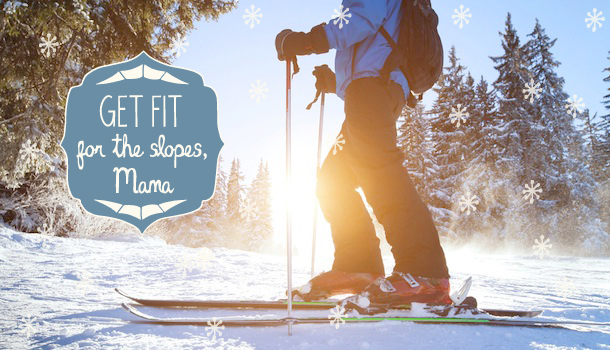
Ski season is finally here, and if you’re planning a trip to the mountains in the next few months, preparing your body is just as important as choosing the right chalet with the perfect view! Skiing is a very physically challenging sport: Without the proper conditioning, a day on the slopes may lead to a few days of extreme muscle soreness and stiffness, ruining valuable ski time. So give your body a break and follow the 8 exercises below to be in tip-top shape before you hit the slopes!
There are three main types of workouts that help ready your body for skiing. These involve balancing, jumping and stability exercises.
Start each workout with a warm up session involving 5-10 minutes on a stationary bike or a very light jog. Follow this with a light stretching routine (pay special attention the muscles in the lower body, ie. hamstrings, gluts, quads and calves).
Most of the following 8 exercises can be done without any specialised equipment:
 1. Forward Lunge
1. Forward Lunge
The forward lunge is a simple exercise to help improve flexibility of the hips. Start with both hands on your hips. Feet should be shoulder width apart with toes pointing forward. Start by taking one step forward and lowering your body until both knees are at a 45 degree angle. Do not step too far forward and keep your back straight throughout the movement. Keep your weight on the heel of the forward foot. The lead knee should not cross the plane of the toes. Push back up to the starting position. Complete 10-12 reps on one leg then switch to the other leg.
2. Sprints (Treadmill or Outdoors)
Sprinting will help to build your cardiovascular fitness and endurance. Because this is considered a high intensity exercise, it is recommended that you consult a physician before starting a sprinting program. Warm up with a light jog for 5-10 minutes. Each sprint should last 30 seconds. Start the first sprint with a maximum intensity of 50% followed by slowing down to a comfortable pace for 2 minutes. Keep moving – do not stop. Next, sprint for 30 seconds at a 75% intensity followed by a comfortable pace for 2 minutes. The remaining 30 second sprints will be at maximum intensity followed by 2 minute recovery periods. Make sure your heart rate is slowed to a point where you can maintain a conversation without gasping before you start the next sprint. Aim to complete 5-10 sprints per session (depending on your physical ability).
 3. Skipping Rope
3. Skipping Rope
Skipping rope is another great way to improve your aerobic capacity. It is also a great workout for the shoulders, arms and legs. Keep your elbows tucked in during the exercise. The movement of the rope is mainly created by the wrists and forearms, not the shoulders. The jumping should take place on the balls of the feet, not the heel. Jump 1-2 inches off the floors, just high enough for the rope to pass under the feet. Build up time to 5 minutes.
4. Deep Squat
Squatting is a great indicator of overall fitness level and flexibility. Done properly, the deep squat activates all the muscles of the lower limb in addition to the stabilising muscles of the trunk. Note that this exercise is a very demanding movement. If you feel pain at any point, you should stop immediately and seek a physical assessment from a qualified medical practitioner. The starting position for a deep squat is feet shoulder width apart, toes pointing forward. Arms can be pointed straight forward with hands clasped together or they can be crossed with each hand resting on the opposite shoulder. The spine should be straight throughout the entire movement.
Start by contracting your abdominal, thigh and butt muscles (do this for the entire movement). Slowly lower your body as far down as possible. Make sure your knees do not pass in front of your toes. Most of the pressure will be on your heels (do not at any point raise your heels off the floor). Keep your head facing forward and your shoulders back and chest out. Stick your butt out slightly so that the curve in your low back is maintained. Try to aim for your hips to be below the level of your knees at the bottom of the squat. Pause at the bottom for a few seconds and then power back up to the original starting position. Start with sets of 5 repetitions and progress up to sets of 10 repetitions.
5. Side to Side Jumps
Skiing requires a lot of lateral mobility of the hips as you carve your way down a mountain. Side to side jumping helps to mimic the constant lateral weight shifts that occur as one changes direction while skiing. Start by marking a straight line on the floor using a piece of tape, a stick or whatever. It will be used as a frame of reference and you will be jumping side to side over the line. Start on one side of the line with feet fairly close together and knees almost touching. Your knees should be bent slightly throughout the exercise to absorb shock. Now start by jumping from side to side. The movements should be quick with minimal bend to the knees. It should resemble skipping but with more lateral movement. Start with sets of 10-12 repetitions and progress to sets of 20 repetitions.
6. Single Leg Squats
Single leg squats are a great way to improve your balance on the slopes. Start by sitting on a chair or bench. Knees should be at a 45-degree angle. Arms should be extended straight in front of your body with hands clasped together. Start by raising one leg slightly off the chair/bench. Contract your abdominal, butt and thigh muscles and push up with the planted foot to a standing position. Simply reverse the pattern to sit back down. This constitutes one repetition. This exercise is very tough, so initially you may want to hold onto a table for support until the movement becomes more engrained into your muscle memory. Start with sets of 5 repetitions and progress to sets of 10 repetitions for each leg.
 7. Front Planks
7. Front Planks
Front planks are one of the most effective and safest exercises to build overall core stability and strength. Start by getting down on all fours on the floor. Both knees, elbows, forearms and hands should be in contact with the floor. Elbows should be directly below your shoulders and tucked close to the body. Forearms and palms should be flat against the floor. The upper arms and forearms should form a 90-degree angle. Now straighten your legs one at a time so that you are supporting your body on your elbows and toes. Make sure to contract your abdominal and butt muscles the entire time. Avoid arching your lower back, hiking your hips upward, or shrugging your shoulders. Hold for 10 to 30 seconds, gradually building up to 3 minutes.
8. Squat Jumps
Squat Jumps help to build explosive force. Start by standing with your feet shoulder width apart pointing forwards. Next perform a regular deep squat (see above), contract your abdominal muscles and jump up as high as possible. Land as softly as possible, lowering your body into a deep squat position to complete the one repetition. Work up to 3 sets of 10-12 repetitions.
After a hard day on the slopes it is vital to warm down properly. Use a foam roller to help release some of the built up lactic acid in your leg muscles. A warm bath or gentle massage will also help to soothe overworked muscles. Investing time into all the above will ensure you maximise your enjoyment on the slopes. Have a great trip!
 View All
View All







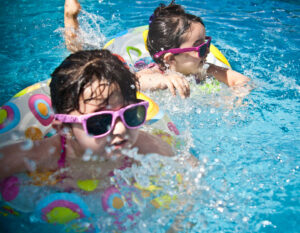
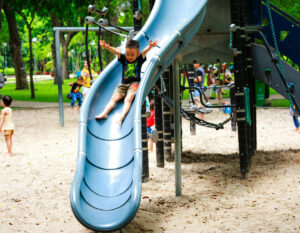
 View All
View All



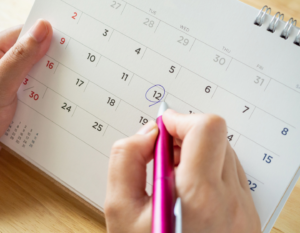
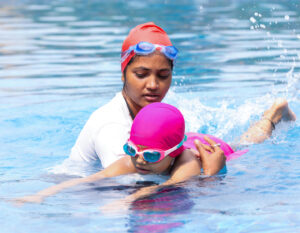
 View All
View All


 View All
View All











